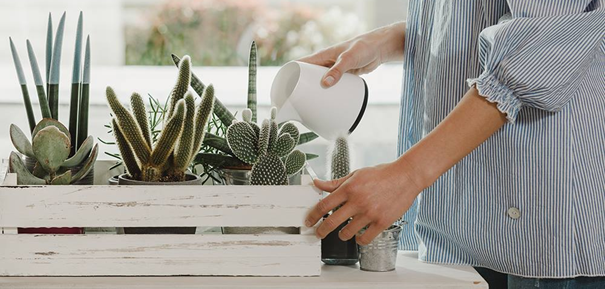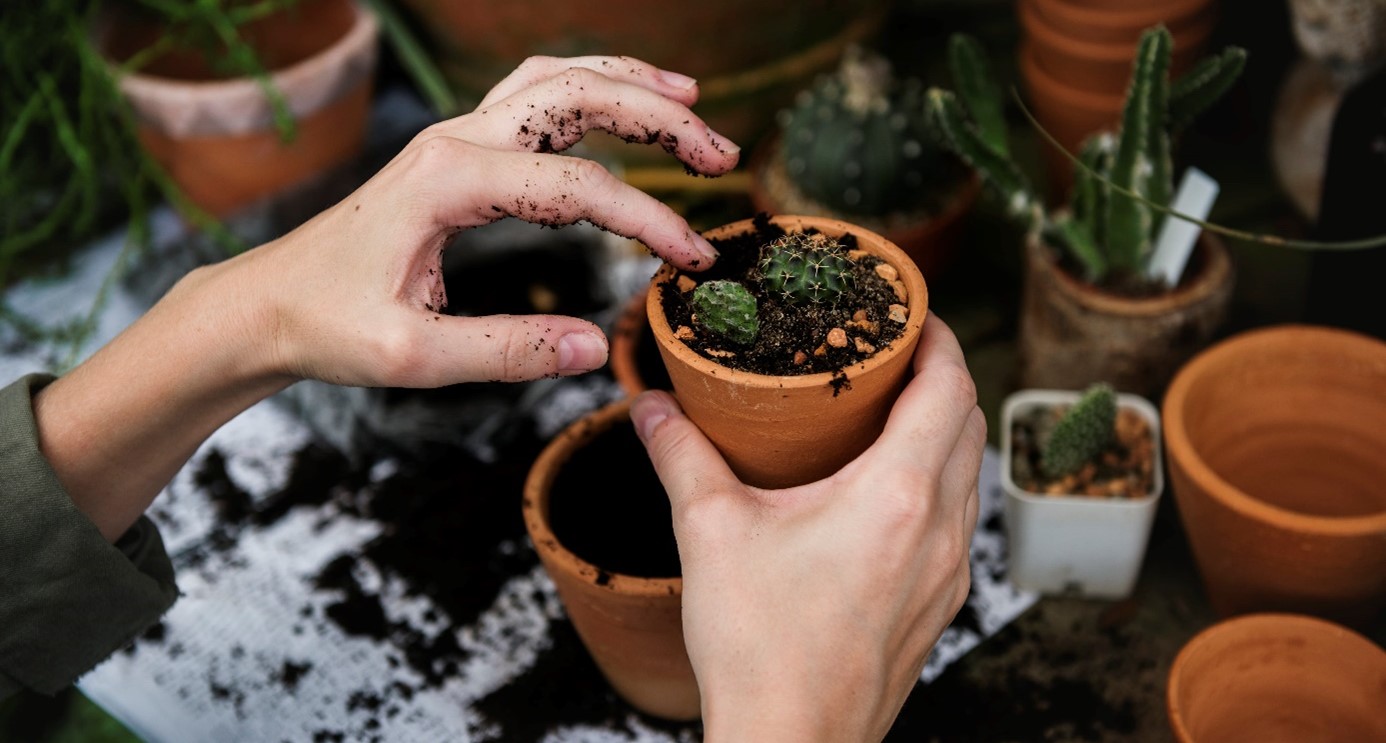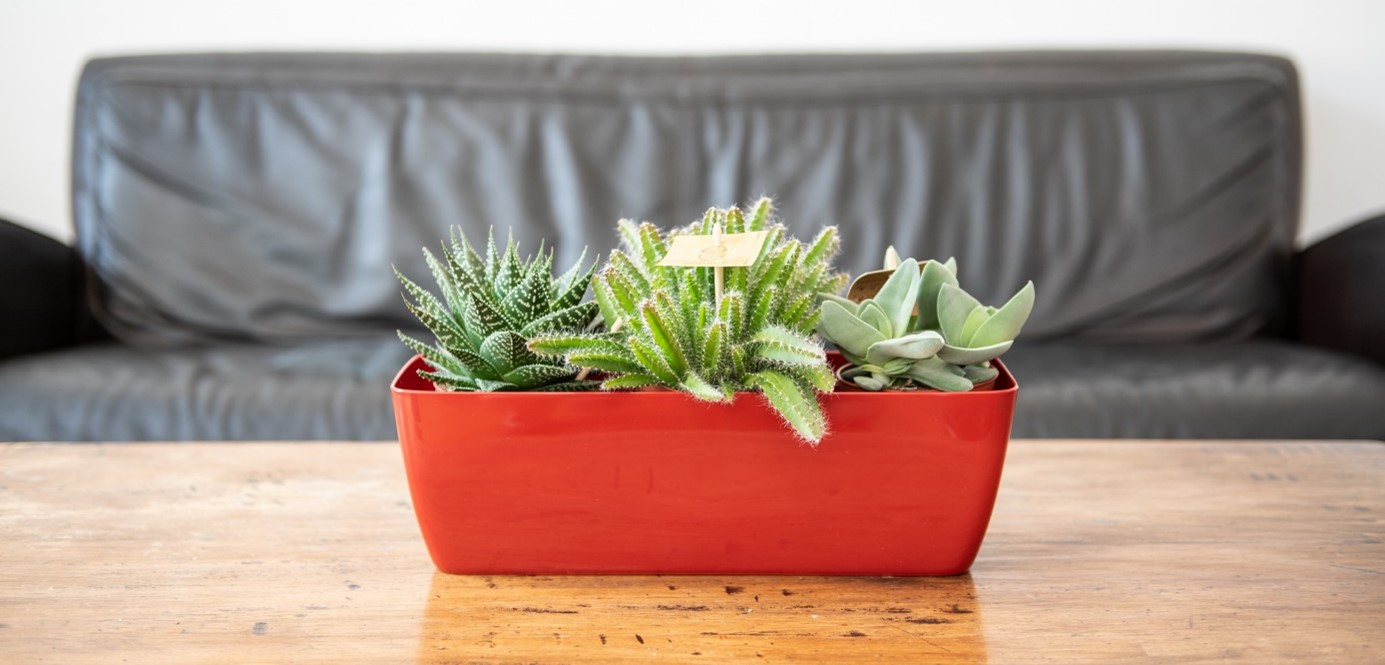Cacti are all the rage because they fit in perfectly with most interiors, and adapt to a wide range of styles - from minimalist to bohemian to exotic! However, beyond the decorative aspect, they are above all plants that need proper care. Cactus care isn't difficult, but it is a little special, just like them! Here are a few tips on how to care for them.
Light
In most cases, a cactus will be very happy in an area that receives direct sunlight for part or most of the day.
This is often essential if you want your plant to grow and flower. That said, almost all cacti will accept a shadier spot for a while, but their growth will suffer.

Watering
The biggest myth about cacti is that "they don't need much water". Although it's true that they can cope with long periods of drought. So, if you forget to water, the plant will most likely survive for weeks, even months, with no apparent effect. However, by doing so, your cactus becomes a survivor rather than a thriving plant.
The best way to water your cactus is as soon as the soil is completely dry. When this happens, water thoroughly, then stop watering until the soil is dry again.
Give less water if your plant is in a colder or shadier spot. In winter, you can stop watering if you've moved your plant to a cold place for its resting period.


Humidity
Don't forget that deserts are generally very arid, with very low humidity levels. Care must therefore be taken not to provide too much humidity, as cacti don't like damp, poorly ventilated environments. This is why bathrooms and kitchens are not suitable for them.
Power supply
A standard cactus fertilizer or an all-purpose fertilizer in spring and summer will do. Since cacti grow slowly, you don't need to add fertilizer more than a few times a year.
Temperature
Generally speaking, there's no upper temperature range too high for cacti. On the other hand, 5°C is the lowest safe temperature. In a pinch, if the soil is dry, you can go as low as 0°C ... but this could cause damage.


Potting
Whatever their size, most cacti have a very low root volume compared with what you can see above ground. Roots are often superficial rather than deep, so using a large container is a mistake, as it increases the risk of over-watering and rotting.
You can repot young plants every year to give the roots more room. Once the plant has reached adult size, you can reduce the frequency to intervals of 3 or 5 years.
For larger cacti, use a sturdy, heavy container to prevent them from toppling over.
When it comes to substrate, opt for cactus potting soil.


Multiplication
In some cases, cuttings can be taken in spring and left to dry for a few days before being planted in a well-drained mixture.
Most often, however, propagation is by seed. Simply fill a pot with cactus soil and cover the surface with a small layer of gravel. Sprinkle the cactus seeds on top and water gently. Then cover the pot with a plastic bag, like a tent, to create a humid atmosphere. Place the pot in a bright spot, away from direct sunlight, and give it warmth to encourage germination.
Growth
Almost all true cacti are slower-growing than other houseplants. This doesn't mean they don't grow (large columnar cacti can grow a few centimetres a year).


Flowering
Many cacti produce stunning flowers in a wide variety of colors, provided they are given the right conditions and care. For most of them, this means plenty of sunshine, regular watering and warm temperatures during the growing season.
To make a cactus bloom, you need to respect a resting period in winter (which means putting your cactus in a cooler place and reducing watering).
If all goes well, cacti grown from seed should flower after three or four years, and every year thereafter.


Toxicity
Although some varieties of cactus are toxic to people and pets, most pose no problem. What's more, the fact that they have thorns helps to keep curious children and animals away.


Remove thorns
Grabbing a cactus can be dangerous, as the protective spines are there to defend the plant. You need to protect yourself when handling your cactus, for example when repotting it. Make sure you wear thick gloves, or wrap a piece of cardboard around your cactus to protect your hands.
Here's how to remove the various types of cactus thorns:
- Some cacti have long thorns that can puncture the skin quite deeply. Fortunately, they are easy to remove with your fingers or tweezers.
- Many cacti are covered with tiny spines that resemble fine hairs that easily dig into the skin. If this happens, they are more difficult to see and remove. Rather than removing them one by one with tweezers, use adhesive tape. Apply it to the affected area, then remove it quickly.


Browse the collection